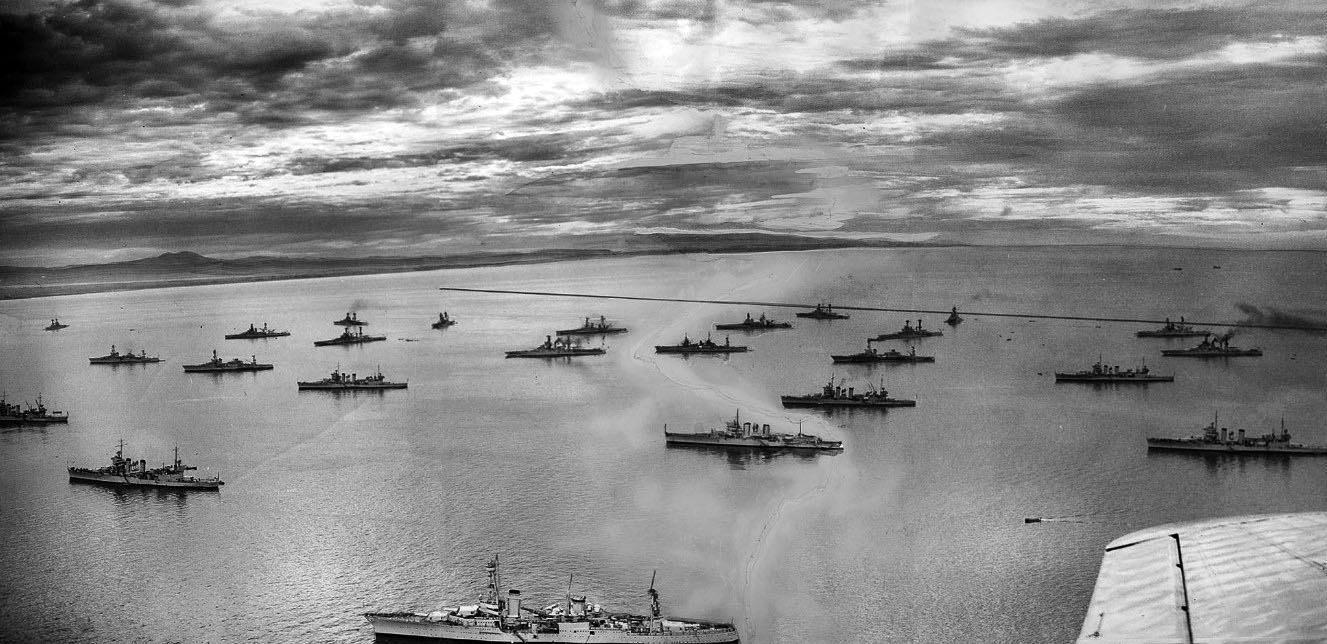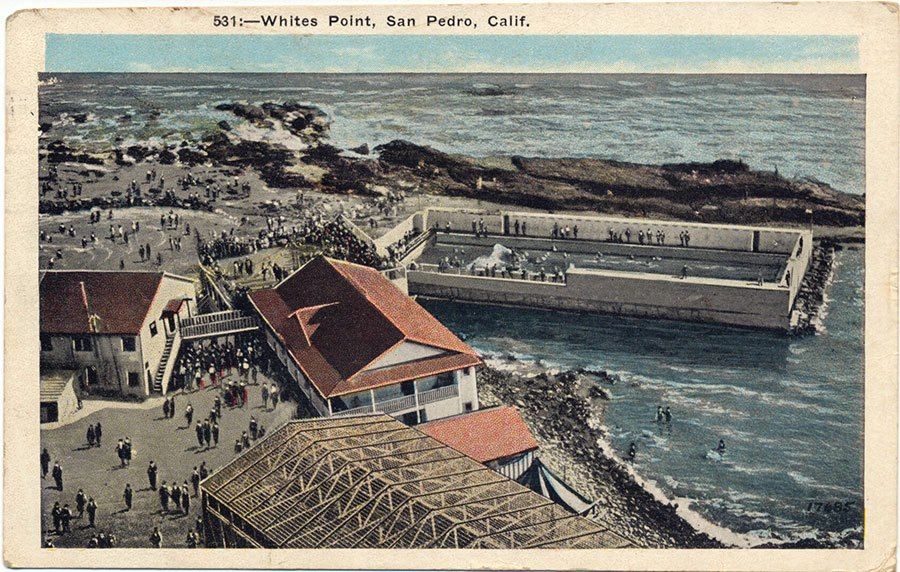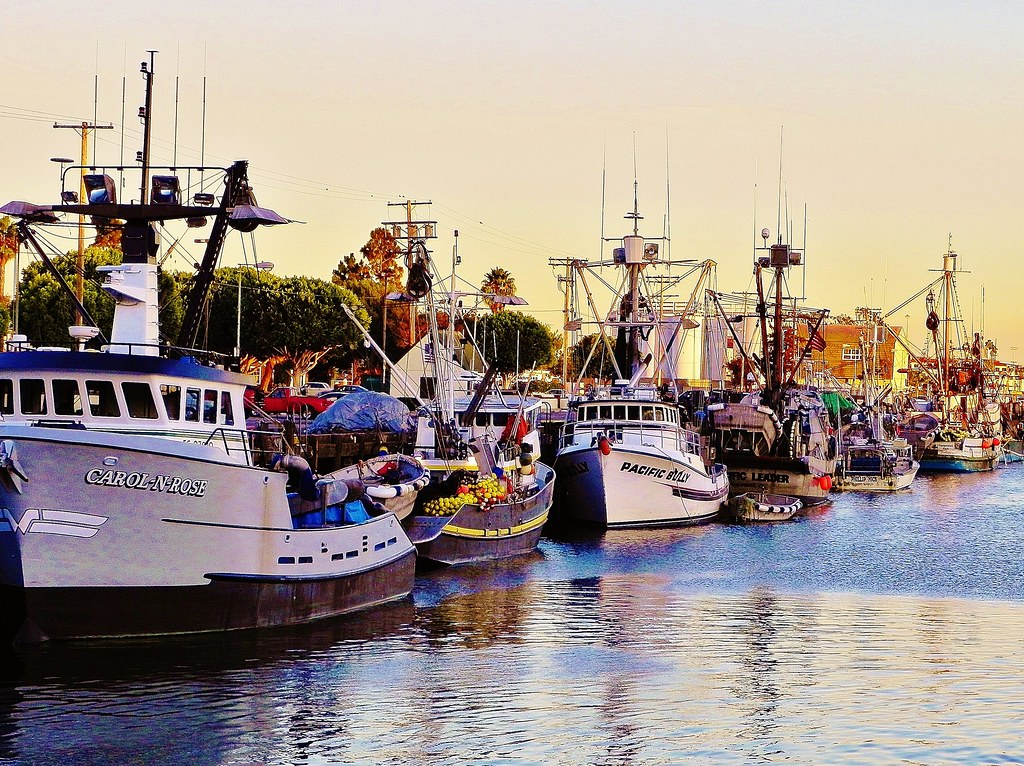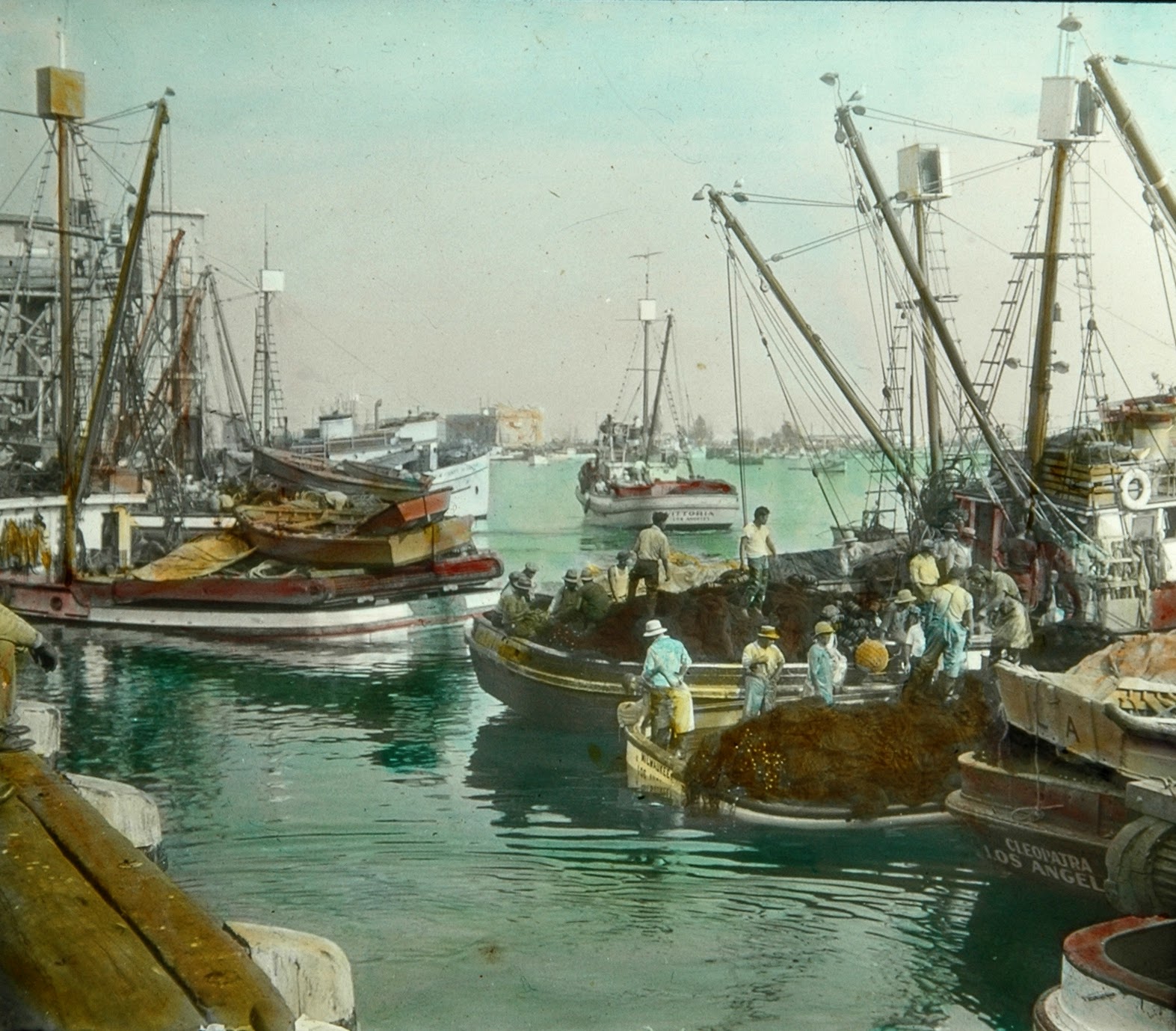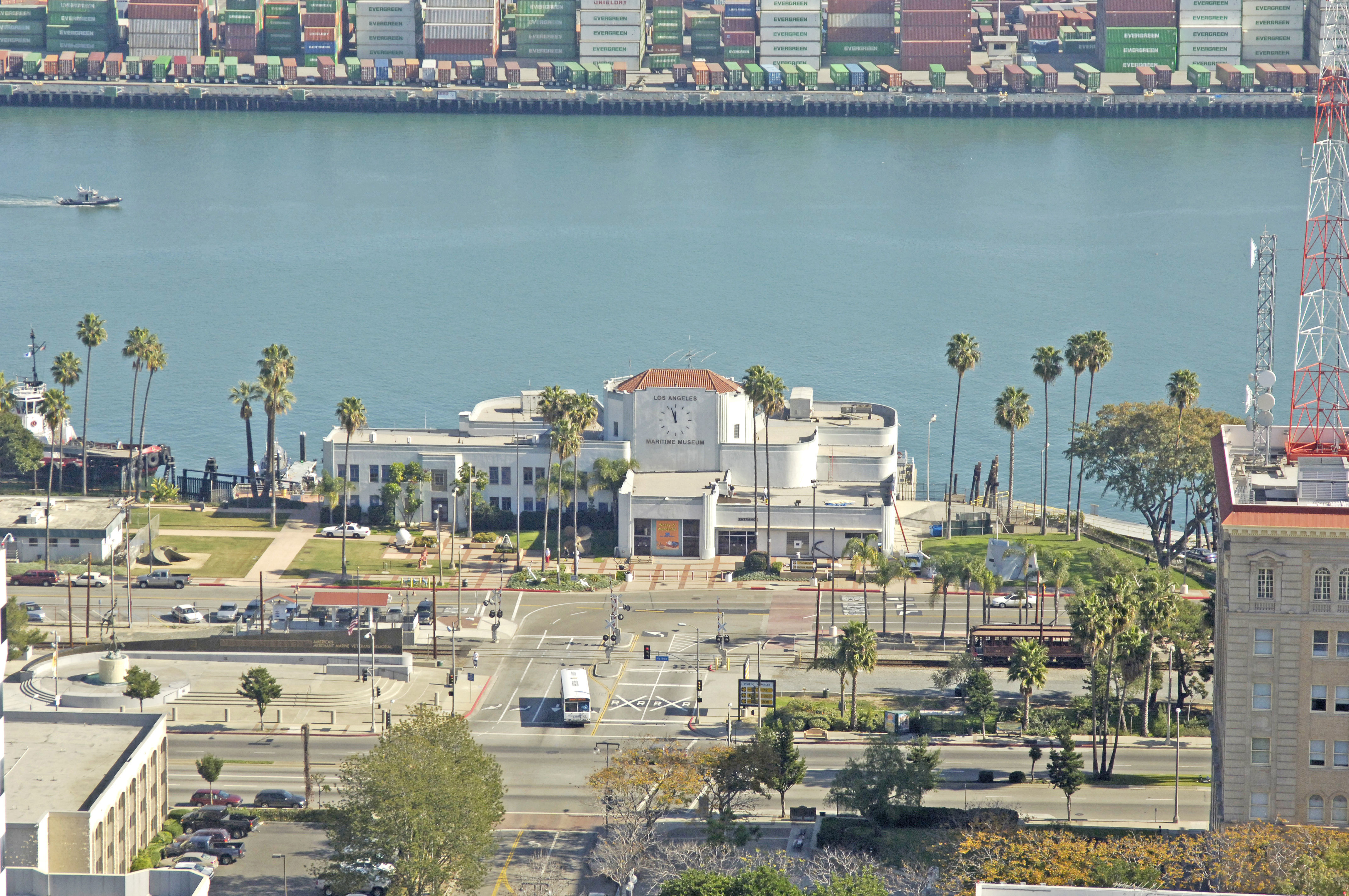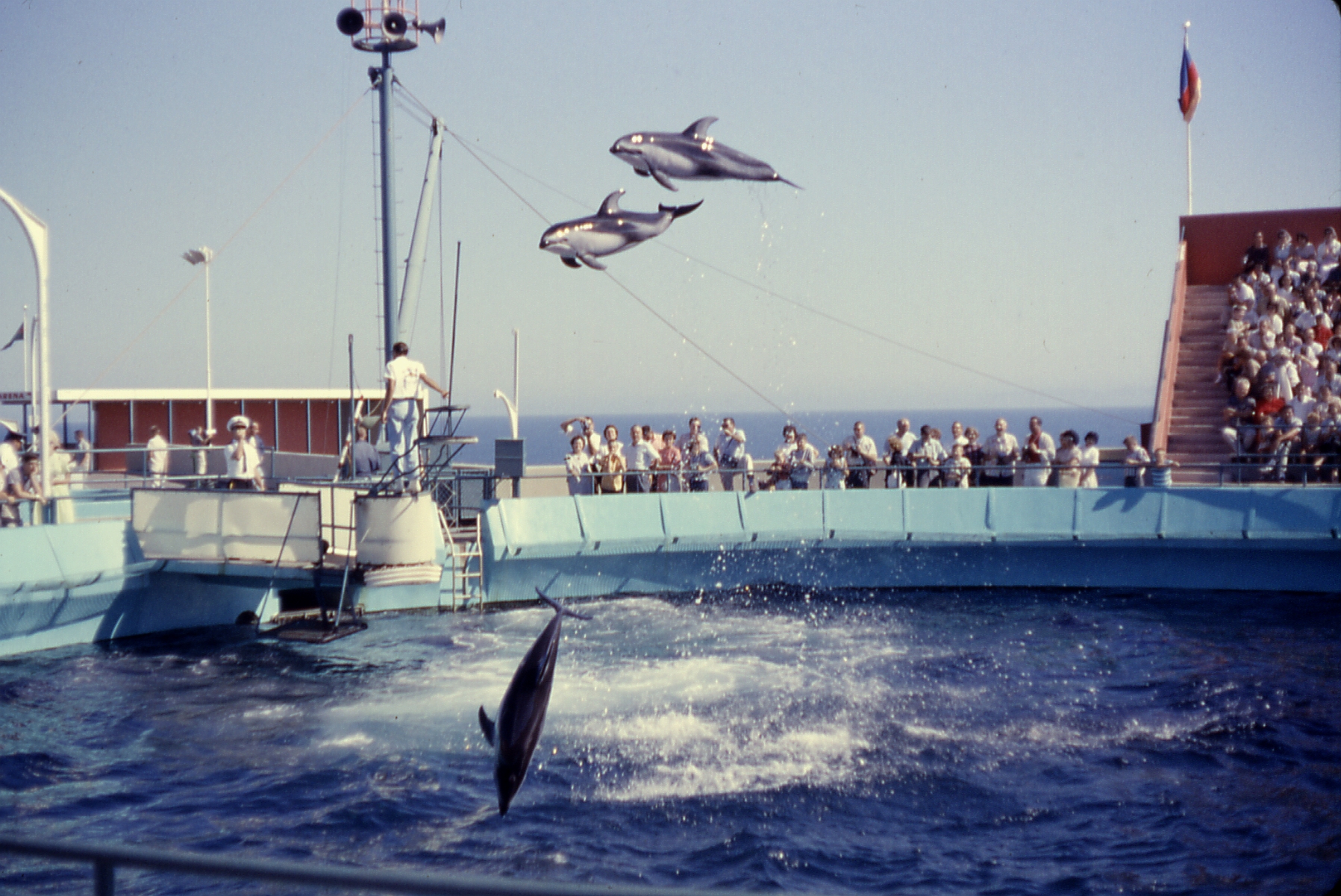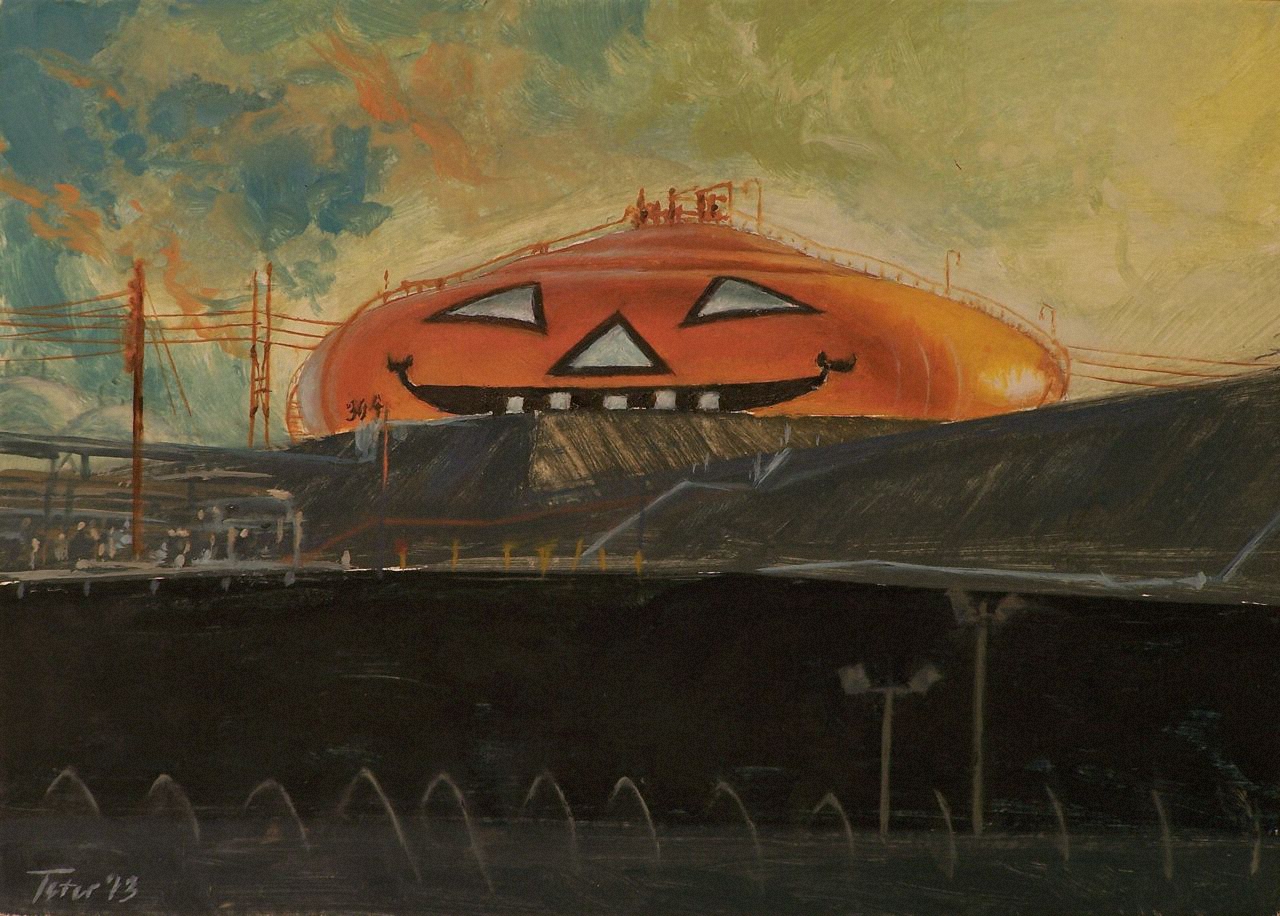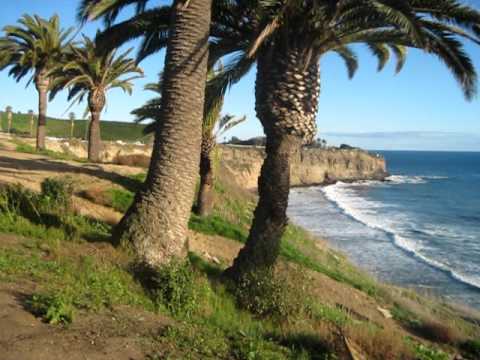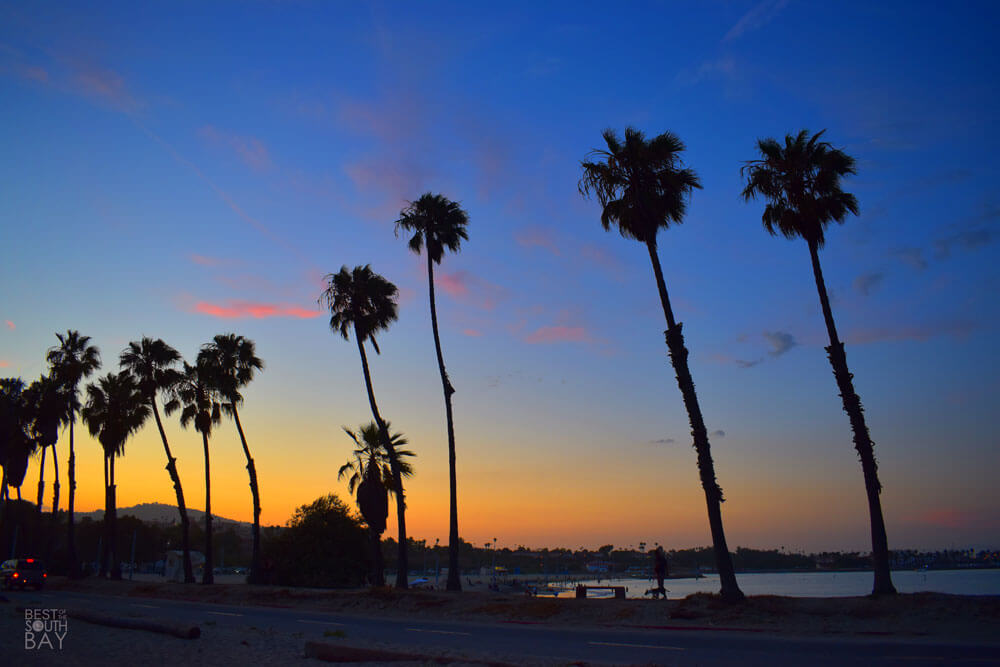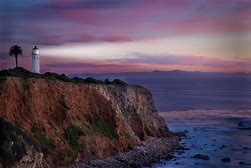Welcome all Pirates, Bucaneers, Privateeers and Freebooters
Ahoy Mateys!!! Shiver Me Timbers!!
SPHS Class of 1973 50-Year Reunion Celebration is Upon Us!
Sold Out!
Pre-Reunion No Host Social Mixer
Friday, August 25, 4:00pm-9:00pm
Improved Order of the Red Man Wigwam
543 Shepard Street
San Pedro, CA 90731
- Casual dress or come as a Pirate
San Pedro High School Class of 1973 Reunion
Saturday August 26 4:00pm-10:00pm
San Pedro Elks Lodge
1748 Cumbre Drive
San Pedro, CA 90732
Ke’Alian’s 50th Reunion Agenda
August 26, 2023 ~ San Pedro Elks Club
4:00pm-5:30pm: Welcome-Registration / Happy Hour Meet and Greet
5:30pm-7:00pm: Buffet Dinner
6:45pm-7:00pm: Official Welcome
Important Announcements ~ Main Room
Recognition of Key Ke’Alians
Tribute to Fallen Pirates
A Toast to The Class of ‘73: SPHS ~ Pirates are Best!!!
7:00pm-10:00pm: Dancing, Reminiscing/Conversing, Hugs, Handshakes & High Fives
10:01pm: Farewell - Sail-on & Stay well Pirates!!
Treasures to See and Events to Experience!
Pirate Decorations
Memorial Board
Memorial Video
Pirate Photo Booth
Silent Art Auction
Pirate Raffle
Treasures and Bounty beyond yer wildest imagination!
Reminder to bring cash! Doubloons, pieces of eight, and bar silver accepted!
Grub and Grog
Buffet: Cali-Mex
Cash Bar
Music: Provided by The Topics
Quartermaster Check-in Etiquette / Pirate Code of Conduct
Leave yer cutlasses, muskets, irons, shovels, and cannon at the door
Remember: No Spyglasses, grappling hooks, parrots or hornswaggling
No mutinies, keelhauling, walking the plank, or swinging from the yardarms
No settling of old scores, No smoking near the powder
Known Rapscalions will be turned away,
Scalliwags will be given the Heave Ho
Bilge rats need not apply
Puffy shirts, bandanas, and hornpipes encouraged
Reunion Reminders
Cash for Raffle
Cash for Silent Art Auction
Cash Bar
Take Photos!! Submit Photos to this website and to Facebook!!

Hey Pirates of 73! Hear the Siren's Call
Scrape off the old barnacles, break out yer compass and sextant
Weigh anchor, unfurl your sails, and chart a course over the seven seas
To San Pedro where the flags and pennants are aflyin’ for the class of 73
Sail onward to ye olde elks lodge for a yo-ho-ho grand soirée
As we gather again to celebrate our camaraderie and glorious days
Bring yer old charts, protracters, compasses, and memories of buried treasure
Reconnect for scuttlebutt with classmates, old salts, and sea dogs we be
Gather round the quarterdeck for a clap o’ thunder with friends, family, and pirates alike
Listen to stories of far away shores with adventures that elicit both terror and inspirational dreams
Regale old crew mates with tales of journeys, escapades and wisdom gleaned
Recall long forgotten sea shanties that harken back to days gone by
Of sailing uncharted waters with only a compass, the horizon, and North Star as yer guide
Seeking treasures and fightin’ through adversity with many a hard won victory
Rekindle the spirit of what we’ve done, where we’ve gone and for those who’ve passed
Though we’ve lost many along the way, remember them fondly with a toast and a heartfelt story
Old pirates never die, they live forever in our memories, our hearts and in legacy
So shut yer flap, show a leg, and splice the mainbrace ye Scalliwags
Grab yer spyglass, climb the crows nest, keep a weather eye out for the pirate flag and San Pedro Bay
Drop anchor, row ashore to the celebration of 73 fit for we pirates who be
We’ll hoist a few for days of yore, and for one and all in spirited revelry


Reunion Committee
Thanks to the San Pedro High School Class of 1973 Reunion Committee that proved in real time:
The Whole is Greater Than The Sum of its Pirates
- Another in a multi-year series of successful and memorable reunions; 9 Reunions!
- Awesome job in planning, coordinating, organizing, and executing this reunion!
- Applying individual skills, expertise, talent, inspiration, and hard work
- A truly collaborative effort that included multiple meetings, continual communication, and effective group decision making
- To create an astounding experience and celebration!
Thank You to the following talented reunion committee who participated in the planning!
Nancy Bowen Budar
Teresa Bass Canavan
Linda Dunton Delmar
Darlene Bender Funk
Jay Leffingwell
Toni O’Donnell
Rocky Paulsen
Diane Yasuda Pegg
Elaine Krueger Ruggiero
JoAnn Tominaga
Noel Tamburovich Vuoso
Chuck Wilcox



Avast! Beware all ye who enter…

Speak Like a Pirate!
"Ahoy Matey!"
"Avast ye scurvy dogs"
"Shiver me Timbers"
"Yarr Harr Thar be pirates like me!"
"Let's trouble the water!"
"I’ll see ye measured for chains"
"I be the scourge of the seven seas!"
"Belay yer carousin'"
"Obey the captain or learn to swim"
"Keep a weather eye open"
"Me Hearties"
"Prepare to be boarded!"
"Yo ho ho and a bottle of rum"

Pirate Insults
Bilge rat
Scallywag
Scurvy dog
Son of a Biscuit Eater
Lily-livered
Rapscallion
Poxy
Scourge of the Seven Seas
Scabby Sea Bass
Scabrous
Landlubber
Ye lily-livered scallywag
Ye scabrous bilge rat

Pirate Drink Salutations
"Down the hatch"
"Here’s to fair weather and following seas"
"Drink up me hearties"
"May ye cannons never be rusty"
"To high winds and mermaids"
"Hoist the anchor"
"Drink up and don’t be skeered"
"May your ANCHOR be tight,
Your CORK be loose,
Your RUM be spiced,
And your COMPASS be true"

Favorite Pirate Drinks
Rum, distilled from molasses or sugarcane juice, was a very popular bevarage and became a primary export of the Caribbean where many sugar plantations were operating. As a result, many of the ships that pirates attacked were filled with it. Crews tended to drink much of the liquid loot they found. However, rum was also used as a currency and often traded for goods. Rum was also mixed with water to help preserve the water.

 Beer
Beer had a longer shelf life than water and was another favorite of pirates. It became a primary liquid of choice when the water became undrinkable. There were two types of Beer - small beer with lower alcohol content and strong beer. 'Sea-beer' for longer voyages had the most malt, while ‘channel-beer’ had less malt and ‘harbor-beer’ had the least malt. The beer for longer sea voyages were stored in casks with iron hoops rather than the less durable wood hoops.

 Madeira
Madeira is a fortified wine made on the Portuguese Madeira Islands, off the coast of Africa. The islands of Madeira have a long winemaking history, dating back to the Age of Exploration, 15th century, when Madeira was a standard port of call for ships heading to the New World or East Indies. To prevent the wine from spoiling, neutral grape spirits were added. Old 300-year bottles of Madeira wine from the Golden Age of Pirates are still available but extremely costly. To quote a wine seller: "It's like bees stinging you in the mouth in the best way because of the acidity, but the finish goes on for around seven minutes."

 Water
Water was shipped in casks and had a relatively short shelf life. Algae would taint the water with a slimy green scum over time. Adding quantities of rum made it safer to drink and more palatable. Pirates repaired their ships near sheltered areas with sources of fresh water so they could restock their supplies.

 Hard spirits
Hard spirits were available at this time and grouped under the term ‘aqua vitae’ but were not widely used. As one historian noted, “At its all-too-common worst, aqua vitae would have been a stinking, oily potion that burned like Sherman's march going down and left you the next morning with a head as pulpy and tender as a rotten jack-o'-lantern."
 Grog:
Grog: Mixture of rum and water, usually 1:4 ratio
Grog recipe
1 part rum
4 parts water
sugar
citrus juice
nutmeg or cinnamon
 Pirates In Their Own Words
Pirates In Their Own Words
“Pirates plunder the rich under the cover of their own courage.” ― “Black” Sam Bellamy
“I am a man of fortune and must seek my fortune.” ― Captain Henry Every
“Under the leadership of a man you have all chosen to flee. We shall see how you prove yourselves under the hand of a woman.” ― Madame Ching Shih
“Time and tide wait for none!" ― Blackbeard
About Pirates
“It’s funny that pirates were always going around searching for treasure, and they never realized that the real treasure was the fond memories they were creating.” ― Jack Handey
“Fate has brought us together again. Well, actually, buried treasure and pirates brought us together.” ― Kermit the Frog as Captain Abraham Smollet, Muppet Treasure Island
"Pieces of Eight! Pieces of Eight!" ― Captain Flint the Parrot, Treasure Island
"I have a rendezvous beyond my Beloved Horizon." ― Captain Jack Sparrow, Pirates of the Caribbean

Pirate Strongholds and Hangouts
Port Royal, Jamaica
Port Royal is a town located at the mouth of Kingston Harbor in southeastern Jamaica. Founded in 1494 by the Spanish, it was once the largest city in the Caribbean functioning as the centre of shipping and commerce in the Caribbean Sea by the latter half of the 17th century. Port Royal was home to privateers who were encouraged to attack Spanish vessels, and pirates from around the world congregated there. As a port city, it was notorious for its gaudy displays of wealth and loose morals. It was a popular homeport for the English and Dutch-sponsored privateers to spend their treasure during the 17th century. When those governments abandoned the practice of issuing letters of marque to privateers against the Spanish treasure fleets and possessions in the later 16th century, many of the crews turned pirate. They continued to use the city as their main base during the 17th century.

Tortuga Island, off coast of present day Haiti
Tortuga Island is a Caribbean island off the northwest coast of Hispanola. In the 17th century, Tortuga was a major center and haven of Caribbean piracy. From 1630 onward, the island of Tortuga was divided into French and English colonies, allowing buccaneers to use the island as their main base of operations. By 1640, the buccaneers of Tortuga were calling themselves the Brethren of the Coast. The pirate population was mostly made up of French and Englishmen, along with a small number of Dutchmen. By 1670, privateer Henry Morgan started to promote himself and invited the pirates in Tortuga to set sail under him. Morgan and some 2,000 privateers then attacked and sacked Panama City the following year. The Buccaneers were also hired by the French as a striking force that allowed France to have a much stronger hold on the Caribbean region.

New Providence, Bahamas, Nassau
By 1670, there were over 900 people on the settlement of Nassau, then named Charles Town. Charles Town suffered several attacks by the French and Spanish navies, and was eventually destroyed by a Spanish attack in 1684. Two years later in 1686, new English colonists from Jamaica came and settled. Pirates also arrived and stayed so that by 1713 there were over 1000 pirates to 400-500 law abiding citizens. Nassau had become a home base for pirates. The Republic of Pirates, a loose confederacy of pirates, was established in 1706 when Henry Every arrived with a haul of treasure from the Indian Ocean and bribed the governor. With a Code of Conduct in lieu of a charter, and captains elected rather than a president, Nassau was a haven where pirates could operate from safely. This lasted until 1718 when Woodes Rogers arrived from England to implement order and provide offers of the King’s Pardon.

Barataria Bay, Louisiana
Barataria Bay is in southwestern Louisiana on the Gulf of Mexico, 15 miles long and 12 miles wide. Barataria Bay was used in the early 19th century as the base of smugglers, pirates, and Buccaneers led by the pirate Jean Lafitte, “The Terror of the Gulf.” The bay was located beyond a narrow passage between the barrier islands of Grand Terre and Grande Isle. Barataria was far from the US naval base, and ships could easily smuggle in goods without being noticed by customs officials. Workers would reload goods into smaller batches onto barges, for transport through the many bayous to New Orleans.

St. Mary’s Island, Madagascar
St. Mary's Island became a popular base for pirates, between the 17th and 18th centuries. Beginning with Adam Baldridge in 1691 and ending with John Pro in 1719 the location was favorable for pirate activity, as it was near maritime routes traveled by ships bearing loot from the East Indies. The location also provided bays and inlets for protection from storms, abundant fruit and quiet waters. Legendary pirates lived in the île aux Forbans, an island located in the bay of Sainte Marie's main town, Ambodifotatra. The utopian pirate republic of Libertalia was also rumoured to exist in this area, although the republic's existence, let alone its location, has never been proven.
Clew Bay, Ireland
The natural ocean bay is overlooked by Croagh Patrick to the south and the Nephin Range mountains of North Mayo in Western Ireland. Clare Island guards the entrance to the bay. Clew Bay was the center of the O'Malley family possessions in the Middle Ages, and is associated especially with Grace O’Malley. She is known as the Pirate Queen who commanded a fleet of ships and maintained several castles, including those on Clare Island, Achill and Rockfleet. Clew Bay became a haven for pirates in the area.

Pirate Headline History
75BC: Julius Caesar Kidnapped and Held for Ransom by Pirates
- Gaius Julius Caesar, 25, kidnapped by Cilician Pirates while traveling to Rhodes
- Pirates demand 20 silver talents, Caesar insists ransom raised to 50
- Caesar released after ransom paid
- Caesar recruits fleet, pursues and captures pirates
1671: Henry Morgan Plunders Panama City
- Morgan commissioned to attack Spanish shipping and settlements
- Morgan assembled fleet of over 30 English and French ships, 1400 pirates
- The Privateers attack and plunder several Spanish ships and settlements
- Morgan planned an inland attack on Panama City, a major Spanish city
- The pirate ships sailed upriver as far as possible, the pirates then marched overland
- The rirates routed the Spanish force, plundered and sacked the city
- Captured loot of 150,000 - 400,000 pesos
- Culmination of the Bucanneer Period, the first phase of the Golden Age of Piracy
- Morgan later becomes governor of Jamaica


1692: Port Royal Devastated by Major Earthquake
- June 7, 11:40 AM three violent shocks occurred, each stronger than the previous
- Richter Scale retroactive estimate was 7.5, huge tsunami soon followed
- 20 acres sank to a depth of 10 feet and 13 acres slid to a depth of 35 feet.
- 2000 people died immediately, 3000 died of injuries and disease shortly afterward
- Port Royal was largest city in the New World, population estimated between 6500 and 10,000
- Mercantile hub of the Caribbean, most important English port in the New World devastated

1695: Henry Every Captures the Ganij-i-Sawai
- Ganij-i-Sawai, merchant ship of the Mughal empire of India, carrying payment over Indian Ocean to the Ottoman Empire
- The Ganaj-i-Sawai was a fearsome opponent with 62 cannons and 400-500 armed guards
- One of the largest hauls in pirate history worth $95 million in gold, silver and jewels
- The share for each crew member was more than a lifetime’s wages
- Every and most of his 113 crew sailed off into the horizon, never seen or heard from again
- Every was targeted with the first ever global manhunt
- This catch ushers in the Pirate Round, second phase of Golden Age of Piracy
- The lucrative Pirate Round, piracy in the Indian Ocean, inspires pirates everywhere

1715: Treasure Fleet Lost at Sea off Coast of Florida
- Eleven Spanish ships loaded with gold depart for Spain encounter major hurricane
- All ships lost, Spanish salvagers rush to scene to recover the gold
- Pirates swarm in to attack the salvagers, continue salvaging
- 1715 marked beginning of the third phase of the Golden Age of Piracy, the Spanish succession

1718: Feared Pirate Blackbeard Killed in Battle in Ocracoke Inlet North Carolina
- Captain Robert Maynard and crews of the HMS Jane and HMS Ranger commissioned to track Blackbeard
- Blackbeard surprised after a three day planning session and party with Charles Vane
- Blackbeard responds with cannons that left the Ranger inoperable and killed a third of the Jane’s crew
- As the Queen Anne’s Revenge and the Jane slowly came together, minimal crew aboard the Jane
- Blackbeard's crew boards the Jane and hand to hand combat ensued
- Maynard had left the majority of his crew belowdecks for a surprise counterattack
- Blackbeard’s crew taken aback by the onslaught of the crew emerging and firing from below
- As Blackbeard's crew was pushed to the bow, Blackbeard and Maynard were left to duel it out
- Both drew their pistols and fired, then they drew their cutlasses
- Maynard’s sword was broken off at the hilt
- However, Blackbeard’s fatal blow was diverted when he was cut in the the neck by a Maynard crew member
- Blackbeard was subsequently killed by the Jane crew; had suffered 5 gunshots and 20 sword wounds
- Survivors of Blackbeard's crew were arrested and executed

1722: Great Pyrate Bartholomew Roberts Killed in Battle
- Roberts and crew were repairing their 3 ships at Cape Lopez, modern day Gabon
- The HMS Swallow, captained by Chaloner Ogle, encounters Roberts' ships but sails away
- The Ranger pursues believing the visitor to be a merchant ship
- However while out of sight, the Swallow outmaneuvers and captures the Ranger
- The Swallow returns to Cape Lopez and finds Roberts’ Royal Fortune still there
- Royal Fortune fails to escape and becomes vulnerable to a broadside barrage
- Broadside grapeshot struck and killed Roberts; his crew immediately surrenders
- The news shocks the pirate world, as pirates, merchants and citizens thought Roberts invincible
- Turning point in war against pirates, marked the beginning of the end of the Golden Age of Piracy

1801-1805: US Engages in War Against Barbary Pirates
- Barbary Pirates capture merchant ships, confiscate cargo, take hostages, demand ransom
- United States and Sweden engage Tripolitania regarding ransom payments
- Jefferson refuses to pay tribute, coordinates negotiations
- Tripoli negotiations fail, 16 US Warships sent to Barbary Coast to protect shipping and blockade ports
- US warships destroy vessel, capture two tripoli pirate ships
- Small force of US Marines lead team of mercenaries on long march and battle
- 'To the Shores of Tripoli', US Marines take city of Derna
- Peace treaty signed
- 1815: Barbary Pirates return to attacking American merchant ships in the Mediterranean Sea
- Ten ship US squadron departs New York for Tripoli
- US fleet captures ships, recovers hostages!
- Treaty signed, ends 2nd Barbary War

1818: First American in San Pedro Arrested as Pirate
- Joseph John Chapman, American sailor born in Boston, employed as carpenter on the Argentine privateer ship Santa Rosa
- Santa Rosa embarks from Buenos Aires for the Pacific to attack Spanish shipping and settlements in the fight for independence from Spain
- Santa Rosa crew mutinies, sails to Sandwich Island (Hawaii) paradise
- Santa Rosa crew captured by Argentinian privateer Hippolyte Bouchard
- Bouchard sails to North America to attack Spanish settlements in Monterrey, Santa Barbara, and San Juan Capistrano
- Chapman escapes and ‘Shipwrecked’ in San Pedro, arrested as a pirate by local authorities
- Upon release, Chapman assimilates into the local community
- He Learns Spanish, marries local resident, employed as carpenter
- Chapman becomes the translator whenever English speakers arrive in the area
1903: San Pedro High School Adopts Pirate as Mascot
- 1903: San Pedro High School begins classes on the 2nd Floor of the Sixteenth Street School
- 1906: San Pedro High School relocates to its own building at 1221 South Gaffey Street
- 1933: Long Beach Earthquake damages the Gaffey Street high school building
- 1933: New San Pedro High School built at 1001 w. 15th Street
- San Pedro High School adopts the Pirate mascot, perfect for a maritime community

Pirate Shipwrecks Discovered
Whydah Gally, 1984, Wellfleet, Cape Cod, Massachusetts
- Samuel Black Sam Bellamy
- April 26, 1717: Caught in a major fog bank, then hit by a violent nor’easter storm
- 70 mph Winds blowing from the East and North causing 30-40 foot waves
- Ship pushed closer to land and ultimately onto the shoals where the ship was overturned and destroyed
- Only 2 of the 146 crew survived
- Wreckage and bodies were strewn 4 miles up the coast
- Four and a half to 5 tons of gold, silver and jewels estimated worth $400 million were never recovered
- Exhibit: Whydah Pirate Museum, Yarmouth, Massachusetts
 Queen Anne’s Revenge, 1996, Beaufort Inlet, North Carolina
Queen Anne’s Revenge, 1996, Beaufort Inlet, North Carolina
- Edward "Blackbeard" Teach
- June 1718, Ran aground on a sandbar at Topsail Inlet
- Shortly after blockading Charleston harbor and refusing a pardon
- The Pirates and most of the treasure were offloaded to other ships
- Exhibit: Blackbeard Museum at Maritime Museum in Beaufort, North Carolina
 Golden Fleece, 2009, Samana Bay, Dominican Republic
Golden Fleece, 2009, Samana Bay, Dominican Republic
- Joseph Bannister
- July 1686, attacked by 2 British Navy frigates while beached for repairs
- Two day battle between the frigates and the pirate crew
- Pirates had dragged 16 cannons to a nearby island with high hills
- The 16 cannons were formed into a formidable 2 batteries of 10 and 6 each
- The frigates retreated to their home port after running out of ammunition and suffering 23 casualties
- The Golden Fleece suffered major damage, was subsequently burned and sunk
Pirate Treasure
Captain Kidd Treasure
Before he died in 1701, William Kidd claimed to have buried a treasure worth 40,000 British Pounds, though rumours stated that it was more like 400,000, in many different locations. Only 10,000 Pounds were recovered from Gardiner’s Island off the coast of Long Island, NY, and sent to England along with Kidd in 1700 as evidence against him. Kidd tried in vain to use the location of his hidden treasure as a bargaining chip at his trial. The remainder of the loot is rumored to be anywhere from the Caribbean to the east coast of America and Long Island sound.
 1715 Treasure Fleet
1715 Treasure Fleet
In July 1715, 11 Spanish ships laden with treasure from the Americas, set sail from Havana, Cuba, bound for Spain. The fleet encountered a major hurricane just off the coast of Florida. All 11 ships sunk with over 1,000 lives lost at sea. Spanish salvage crews were sent in to recover as much of the treasure as possible. However, not all was salvaged as Pirates swarmed in and harrassed the salvagers. To this day, the 1715 Fleet remains a treasure trove as divers continue to find gold and silver from the wreckages some 300 years on. Pieces of treasure are even said to wash up on the beaches of Florida on occasion.


 Whydah Gally
Whydah Gally
In 1717 the Whydah Gally, captained by Black Sam Bellamy, ran aground and broke apart off the coast of Cape Cod, Massachusetts during a major nor'easter storm. After the storm, local residents gathered at the shore to search for survivors and salvage what they could from the wreckage that was strewn 4 miles up the coast. In 1984, an expedition to find the lost treasure honed in on a patch of sand off the coast. A team of divers initially discovered the ship’s bell, before finding a cache of some 200,000 artifacts. This included silver coins and gold worth more than $100 million. However, this may not be the complete accounting of the treasure.

 Blackbeard’s Treasure
Blackbeard’s Treasure
According to his ledger, Blackbeard’s wealth was evaluated at $12.5 million, which was relatively little for a pirate of his stature. Before his death in 1718, Blackbeard stated that his ‘real’ treasure “lay in a location known only to him and the devil.” When his flagship, the Queen Anne’s Revenge, ran aground on a sandbar, much of Blackbeard’s treasure was distributed to the few other ships in his fleet. Running aground may have been a calculated move on Blackbeards part, as he was able to seek a pardon. Blackbeard soon returned to piracy. Queen Anne’s Revenge was discovered in 1996 and little of value there was little on board of value aside from a small quantity of gold. There are many theories as to where Blackbeard’s treasure might lie, but nothing has been found.
 Treasure of Amaro Pargo
Treasure of Amaro Pargo
When Spanish Privateer Amaro Pargo, richest man in the Canary Islands, passed away in 1747, most of his wealth went to his heirs. However, in his will, he wrote about a chest with a carved wood pattern on the lid which he kept in his cabin. Inside was gold, jewelry, silver, pearls, Chinese porcelain, paintings, fabrics and valuable precious stones along with 500,000 pesos. He explained that the chest contents were itemised in a book wrapped in parchment and marked with the letter ‘D’. However, he never disclosed where the book or treasure were located. Rumors of the hidden treasure include several locations in the Canary Islands.

 Treasure of the Esperanza
Treasure of the Esperanza
In 1816 Inca treasure was looted from the Viceroyalty of Peru and loaded onto the Esperanza in Callao Harbor under cover of darkness. The Esperanza embarked westward headed for the Spanish West Indies. Unfortunately, the ship ran aground on the reefs of Palmyra Atoll, about 1000 miles southwest of Hawaii. The crew offloaded the gold and silver bullion and buried it. From there accounts varied among the surviving crew members who managed to escape the atoll, including partial recovery of the treasure by pirates from a ship named the Santa Rosa. Rumors also exist that much of the treasure is still buried there.

 The Treasure of Lima
The Treasure of Lima
In 1820 the Spanish controlled city of Lima in Peru was on the edge of revolt. It was decided that the city’s gold, jewels and other Inca treasures be sent to Mexico for safekeeping by Captain William Thompson, commander of the Mary Dear. Thompson and his crew turned pirate, sailed to Cocos Island off the coast of present day Costa Rica and allegedly buried their loot. Apprehended by a Spanish warship soon afterward, all except Thompson and his firstmate Forbes, were executed for piracy. While leading the Spaniards to the treasure, the two managed to escape and disappeared into the Cocos jungle. Thompson is rumored to have returned to Newfoundland, while Forbes ultimately settled in California. The estimated $12-$60 million worth of treasure is rumored to remain buried somewhere on the island.


Most Fearred Ships
Queen Anne’s Revenge - Edward Teach "Blackbeard"
- Frigate
- 200 tons
- 40 cannons
- 300 crew

Royal Fortune - Bartholomew Roberts "Black Bart"
- Very powerful
- Adapted for speed
- 42 cannons

Whydah Gally - Sam Bellamy "Black Sam"

Fancy - Henry Every "Arch Pirate"
- Frigate
- One of the fastest ships of its time, used speed to attack
- 46 cannons
- 180 crew

Adventure Gally - William Kidd "Captain Kidd"
- Frigate
- Pursue targets in all conditions
- 287 tons
- three masts, square rigged sails
- lanteen triangular sail
- 46 oars
- 34 cannons
- 150 crew

Delivery - George Lowther

Golden Fleece - Joseph Bannister

Pirate Flags
Pirates would design their own flags as a means of identification and to declare themselves as pirates. The flags were also designed to instill fear and terror in their victims and to give them a chance to decide to surrender without a fight. First account of a Jolly Roger was in 1687 and by 1714, by the end of the War of the Spanish Succession, most pirates would fly them. Pirates would not display their Jolly Roger flags until their prey was within firing range. Red flags usually indicated no quarter be given their victims.


Golden Age of Pirates Ship Types
Pirates preferred fast ships to either catch up to their victims or to sail away from pursuing enemies. They sought maneuverable ships with shallow draft to effectively engage their victims and enemies, and also hide in estuaries. There was always a trade off between speed and power, where many pirates sought a larger ship that could carry more cannon firepower. Larger ships were also favored due to their large holds that could carry more loot.
Sloops
- The most common choice during Golden Age of Pirates during the 16th and 17th century
- Built in the Caribbean and were easily adapted for pirate antics
- Single mast with headsail and a main aft sail
- Greater maneuverability as large bowsprit meant an increased canvas area
- Advantage: They were quick and could attack swiftly and get away fast with a top speed of over 10 knots
- Another advantage: It could hide in shallower waters to escape warships because of its shallow draft
Schooners
- Another favorite of the pirates of the Caribbean and Atlantic was the two-masted schooner
- Fore and aft rigging
- Fast, easy to maneuver and enjoyed a large capacity for guns and cannons
- Narrower hull and shallower draft meant it could easily hide in shallow estuaries and escape its enemies
- The downside was that it couldn’t hold as much booty or crew
Brigantines
- Shallow-draft boat, the brigantine was popular in the Mediterranean
- High maneuverability and speed
- Square rigged with two sails on the main mast
- Oars, common in some designs, could be employed during low winds
- Favored for longer battles targeting large spoils with its larger hold and great firepower
- Could also hold over 100 men
Square-rigged Ships
- More often than not merchant ships, identified by their large square sails and three masts
- Large hold meant that they were capable of holding more booty
- Slow but great for longer crossings
- Not very agile, pirates were not likely to choose a square-rigged ship as their first choice
- Would be great for stealing large amounts of booty
- More likely to be in company among a pirate fleet
Frigates
- Lighter galley-type warship with oars, sails and light armament
- Built for speed with its longer hull and shallow draft
- 3 masts, square rigged
The Dutch Fluyt
- This ship was perfectly designed for carrying large amounts of cargo
- Flat-bottomed, shallow draft, was wide and strong
- Not very swift and weighed over 300 tons
- Pirates had plenty of space to customize this ship with cannons and guns
Galleons
- Spanish design, the galleon combined the need to carry cargo and also defend itself with cannons
- Could sustain a crew of over 200 with more than 70 canons and guns
- Cumbersome maneuverability and slow speed because of its large square sails made it fair game for pirates


Why Pirates?
Pirates have existed since ancient times. Throughout history wherever raw materials and goods were transported over the sea there have been pirates willing to rob the ships transporting goods. These pirates usually targeted ships, however some also launched attacks on coastal settlements where ill gotten gain was lucrative. The earliest documented instances of piracy were in the 14th century BC, when the Sea Peoples, a group of ocean raiders, attacked the ships of the Aegean and Mediterranean civilizations. Later, they threatened the trading routes of ancient Greece, and seized cargoes of grain and olive oil from Roman ships. In 69AD the Roman Senate passed legislation to increase funding for a navy to deter Pirates.
Corsairs were pirates who operated in the Mediterranean Sea between the 15th and 18th centuries. Muslim corsairs had bases along North Africa’s Barbary Coast, while Christian corsairs were based on the island of Malta. Barbary pirates used oars which gave them a major advantage against their enemies whenever the winds were not blowing.
Buccaneers lived on the Caribbean islands of Hispaniola and Tortuga in the 17th century. At first they lived as hunters, but later the governors of Caribbean islands paid the buccaneers to attack Spanish treasure ships. Although raids began with official backing, the buccaneers gradually went out of control, and started attacking any ship that carried valuable cargo, whether it belonged to an enemy country or not. The buccaneers had become true pirates.
Privateers were captains and crews manning privately owned ships armed with guns, operating in times of war. Governments issued the captain and crew with 'Letters of Marque' that allowed them to capture merchant vessels of other countries without being charged with piracy.
Pirates engage in robbery or criminal violence by ship boat-borne attackers upon another ship or a coastal area, typically with the goal of stealing cargo and other valuable goods. Piracy or pirating is the name of a specific crime under customary international law. Pirates would sail along known trade routes and wait for merchant ships to pass through.
Golden Age of Piracy: Thousands of pirates were active between 1650 and 1720 when trade between Europe, the Americas and Africa and also between India and and Ottoman Empire was at an all time high and initially policing was not enforced.
Lure of Piracy: During the centuries of Spanish exploration and colonization “treasure fleets” made regular trips to the Americas to deliver merchandise and collect treasures and precious metals. As these cargos increased in size and value so did the risk of capture and theft. Foreign navies, privateers and pirates threatened, attacked, and plundered many ships of the treasure fleets.
Piracy Provides Opportunities: There was a ready supply of pirates after wars between nations waned and navies would downsize their sailors. Also in Europe, especially In England there was social disruption. Smaller farmers were forced off the land by ruthless landowners and tradesmen were challenged by larger businesses. These displaced people flocked to urban areas looking for work or poor relief. London especially experienced overcrowding and unemployment, and funds for the poor could not meet the need. People had to shift for themselves. Distressed people weren't simply worse off, they had no hope of making a better life. Piracy tempted poor people because it offered them the chance to take more control of their lives.
Many were tempted to become pirates: In an age when few people traveled and young men might have to work seven-year apprenticeships before they could make an independent living, many were tempted to go to sea anyway, though the life was a tough one. Adolescents who longed to escape could get a job on a sailing ship before they were fully grown: agility was needed as much as brute strength. And ordinary sailors toiled for modest wages and were subject to strict discipline. In contrast, piracy not only offered them a chance to get rich quick but also a rare opportunity to exert a degree of power over others.
How Did Pirates Operate?
Pirate Attack Methods: Pirates tried to target lone merchant vessels. They would get close by flying a friendly national flag, then within striking distance they would hoist their Jolly Roger flag to instill terror in their potential victims. The primary goal was to have their victims surrender without a fight. If the captain and crew resisted, cannons were often used to fire warning shots or to fire chain shot (two bars or balls connected by a short chain) which was designed to destroy rigging and masts to disable the ship. Pirates only fired on other ships as a last resort since they didn’t want to damage the target ship or its cargo. Pirates had an array of weapons at their disposal: muskets, pistols, grenades, cutlasses, axes, and clubs so they tried to board the target ships and overwhelm the opposing crew.
Often pirate captains would work in unison by teaming up for success. For example, Blackbeard and Charles Vane worked together to effectively terrorize and plunder merchant vessels. Same scenario with Blackbeard and Stede Bonnet.
Many pirate captains would assemble a small fleet from captured ships to increase effectiveness. Two or more pirate ships would greatly enhance attack strategy and increase their fearsome nature. For example, Bartholomew Roberts captained a small fleet of three ships to great success. Sam Bellamy captained four ships including the powerful Whydah Gally, the Marianne, and the maneuverable Mary Anne.
Pirate Booty: Pirates sought portable loot, that which could easily be disposed of, preferably gold, silver, and jewels. Gold doubloons, silver pesos / pieces of eight were highly favored. The next favored loot was valued cargo that could easily be sold: rolls of silk, spices, tobacco, hides, furs, indigo, sugar, rum. This loot was usually sold in pirate havens to unscrupulous dealers. Weapons, navigational instruments, medicines, ropes, sails, and food were also sought and retained. The targeted ship would itself become a main prize if it was an upgrade to a bigger, faster, or better ship. Pirates were known to upgrade their vessel to a newer model.
How Did Pirates Fare?
Dangers of Piracy: In general, the life of a pirate was often short lived. Many pirates lost their lives during battle, or became ill and passed away. On average, the life expectancy for pirates was no more than two years. Often, their families never even knew what had happened to them.
Disease, Food Poisoning, Scurvy, and Infection: Swords, guns and cannonballs were not what sent most pirates to Davy Jones' locker. (A major danger of cannonballs was shrapnel from flying splinters.) Instead, a pirate's greatest enemy was disease, food poisoning, malnutrition / scurvy, and infection. Many pirates died from blood poisoning after injuries that could easily be treated today. In addition, Pirates lived in close quarters so it was easy for disease to spread from one person to another. This would lead to epidemics of the flu, dysentry and other contagious diseases on a ship. It wasn't known that Scurvy was caused by lack of Vitamin C until a published study by James Lind in 1747. It only took a month of no vitamin C before a person would begin to experience symptoms of scurvy. On long voyages several pirates died from this disease.
Fresh Food Wouldn't Last Long: The beginning of each journey was the time when pirates enjoyed the freshest and most tasty foods of their time at sea. The start of each trip the pirate ship would be well stocked with meat, cheese, fresh vegetables, eggs and more. Many times, live chickens were brought onto the ships and kept on board for their eggs. However, the fresh food was quickly consumed, and the cooks resorted to serving the staples.
The Staples: For extended voyages salted and cured meat, pickled vegetables, hard tack biscuits (sea biscuits), dried beans, lentils / peas were stored and served in various combinations. Oatmeal was also brought on board and made into a thick stew, called loblolly.
Herbs and spices were of high value and included cinnamon, cloves, nutmeg, allspice, pepper, coriander, paprika, thyme, mace, nutmeg, ginger.
Salmagundi: A stew called Salmagundi was also prepared by the pirate gourmet and creative cooks. An original recipe for salmagundi could include any of the following if available: turtle, pigeon, salt beef, salt pork, smoked ham, quail, chicken or duck, squirrels, cabbage, anchovies, pickled herrings, palm hearts, onions, olives, pickled vegetables, raisins, almonds, potatoes, peas, garlic, mustard seeds and doused with vinegar.
Pirate galleys were usually located on a lower deck and often contained an iron stove that was suspended from the ceiling beams by chains that allowed the stove to remain relatively level in rougher seas. The floor was usually lined with tin to prevent sparks from setting fires.
No Prey, No Pay: Most pirates did not receive regular pay. Their only compensation derived from plundering. Plundered booty was supervised by the Quartermaster until such time as it could be shared out or sold and the proceeds divided. Crew members typically got one share each, the Captain and Quartermaster received two shares each, and the various 'officers' or more experienced seamen and skilled workers like the carpenter and master gunner got something in between one and two shares.
Pirate crew members were compensated for any major losses they sustained during an attack, an early form of workers’ compensation. The compensation was graded depending on severity: For example, loss of a right arm = 600 pieces of eight; loss of left arm = 500; loss of right leg = 500; loss of left leg = 400; loss of an eye = 100, loss of finger = 100. Furthermore, the injured crew members were allowed to stay on board the ship though in a less strenuous role, an early return to work policy.
A Code of Conduct provided rules, guidance, and shared understanding for the officers and crew of each ship. Each captain and crew would have their unique Code of Conduct. This included the distribution of the booty most of the time.
A sample Code of Conduct from the pirate John Phillips:
- I. Every Man Shall obey civil Command; the Captain shall have one full Share and a half of all Prizes; the Master, Carpenter, Boatswain and Gunner shall have one Share and quarter.
- II. If any Man shall offer to run away, or keep any Secret from the Company, he shall be marooned with one Bottle of Powder, one Bottle of Water, one small Arm, and Shot.
- III. If any Man shall steal any Thing in the Company, or game, to the Value of a Piece of Eight, he shall be marooned or shot.
- IV. If any time we shall meet another Marooner that Man shall sign his Articles without the Consent of our Company, shall suffer such Punishment as the Captain and Company shall think fit.
- V. That Man that shall strike another whilst these Articles are in force, shall receive Moses’ Law (that is, 40 Stripes lacking one) on the bare Back.
- VI. That Man that shall snap his Arms, or smoke Tobacco in the Hold, without a Cap to his Pipe, or carry a Candle lighted without a Lanthorn, shall suffer the same Punishment as in the former Article.
- VII. That Man shall not keep his Arms clean, fit for an Engagement, or neglect his Business, shall be cut off from his Share, and suffer such other Punishment as the Captain and the Company shall think fit.
- VIII. If any Man shall lose a Joint in time of an Engagement, shall have 400 Pieces of Eight ; if a Limb, 800.
- IX. If at any time you meet with a prudent Woman, that Man that offers to meddle with her, without her Consent, shall suffer present Death.
Pirate Ship Officers
Captain
Quartermaster
Sailing Master / Navigator
Master-at-Arms / Gunner
Boatswain (obtained provisions, materials for the ship)
Carpenter
Surgeon (many times this role was filled by the Carpenter)
Cook

Whither Pirates?
Several factors led to the decline of the Golden Age of Piracy as British government began to realize that piracy was adversely affecting its settlements and colonies.
- Colonial governors were sent to the Caribbean territories to replace corrupt governors and their apparatus
- Prime example: Woodes Rogers sent to Nassau to end the Republic of Pirates
- King George I declared clemency on September 1717 with a pardon to any pirate who would give up piracy
- Pirates who did not accept the pardon were specifically hunted down by the Royal Navy and privateers
- Offer of cash rewards for citizens (often fellow pirates) who would identify pirates
- Royal Navy increased its presence in the effort to defeat pirates by swiftly responding with warships
- By 1718 the British had approximately 124 ships in its Royal Navy
- The majority were given specific missions to hunt down and kill all pirates
- Royal Navy adapted to faster sloops instead of heavy gunships to quickly respond to incidents of piracy
- British government created seven new commissioners whose sole purpose was to try pirate related cases
- Captured pirates were tried in courts of law and often hung
- The trials were speedy and pirates were provided with little or no representation
- Entire pirate crews were executed rather than just the pirate captain
- Lengthy prison sentences were implemented for those pirates who were not executed
- American colonies were allowed to bring pirates to trial and hang them
- The East India Company began to use convoys and aggressively protect its assets at sea

Popular Culture
Pirates have remained at the forefront of popular culture with a few key media publications, releases, and attractions.
1724: A General History of the Robberies and Murders of the Most Notorious Pyrates by Captain Charles Johnson (possibly a pseudonym for Defoe) introduced many features which later became common in pirate literature, such as pirates with missing legs or eyes, the myth of pirates burying treasure, and the name of the pirates flag Jolly Roger.
1883: Treasure Island a novel by Robert Louis Stevenson
1911:Peter and Wendy by John Matthew Barrie
1926-2017:Several pirate movies, especially the latest Pirates of the Caribbean movie series which has grossed $4.5 Billion
1967: Disney Theme Park Ride / Experience
- Walt Disney's Pirates of the Caribbean is a dark water ride that opened at Disneyland in March 18, 1967. It would be opened in other Disney parks, Magic Kingdom, Tokyo Disneyland, and Disneyland Paris.
A few major US sports franchises use Pirates or Pirate vaiations as their team name
Major League Baseball: Pittsburgh Pirates (1891)
NFL Football: Las Vegas Raiders (1960), Tampa Bay Buccaneers (1976)
- Tampa Bay Raymond James Stadium has a 43-ton steel and concrete replica pirate ship in the north end zone that fires cannons after every home team score. Throughout a game the song "Yo Ho a Pirate's Life for Me" is played.

Events Inspired by Pirates
International Talk Like a Pirate Day
- 'Celebrated' every year on September 19
- International Talk Like a Pirate Day is a parodic holiday created in 1995 by John Baur and Mark Summers of Albany, Oregon, who proclaimed September 19 each year as the day when everyone in the world should talk like a pirate. It has since been adopted by many as an official holiday.
Gasparilla Pirate Celebration, Tampa, Florida
- Large parade and a host of related community events, begins mid-January (last Saturday in January) with a Children's parade and ends in early March with an Outward Voyage Home celebration. Pirate ship with flags.
- Gasparillia began as a surprise 'pirate invasion' on horseback during Tampa's May Day festival in 1904. Over the next decade, the Pirate Parade was staged as an occasional add-on to other community events, with the highlight of the early period being the first seaborne invasion in 1911.
- Crowd size for the Parade of Pirates is about 300000 making it the third largest parade in the US, and an estimated 1,000,000 people attend at least one Gasparilla event in a given year.
- Economic impact for the area is over $20 million, and the combined events bring in over $40 million for the 'Gasparilla Season'.

Pirate Invasion Long Beach
- ShoreLine Aquatic Park
- Held on July 8 and 9, 2023

San Pedro Pirates!










































































